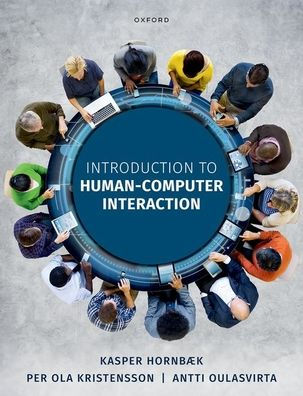This is an open access title available under the terms of a CC BY-NC-ND 4.0 International licence. It is free to read on the Oxford Academic platform and offered as a free PDF download from OUP and selected open access locations.
Aimed at undergraduate students in computer science, design, and engineering programs, and master students in dedicated programs, this is the first comprehensive textbook for students of human-computer interaction.
While HCI is primarily a research-driven field, the book focuses not only on scientific principles of interaction, but also on the very concrete goal of designing better computing systems. The book revises and synthesizes topics that have been previously scattered across multiple books and papers, including design, engineering, empirical methods, and technology.
Although it covers emerging topics like VR and AI, the book places its emphasis on the more time-enduring principles and methods. The book is open access and comes with associated materials for teachers and students, available on the book's companion website.
1146710332
Aimed at undergraduate students in computer science, design, and engineering programs, and master students in dedicated programs, this is the first comprehensive textbook for students of human-computer interaction.
While HCI is primarily a research-driven field, the book focuses not only on scientific principles of interaction, but also on the very concrete goal of designing better computing systems. The book revises and synthesizes topics that have been previously scattered across multiple books and papers, including design, engineering, empirical methods, and technology.
Although it covers emerging topics like VR and AI, the book places its emphasis on the more time-enduring principles and methods. The book is open access and comes with associated materials for teachers and students, available on the book's companion website.
Introduction to Human-Computer Interaction
This is an open access title available under the terms of a CC BY-NC-ND 4.0 International licence. It is free to read on the Oxford Academic platform and offered as a free PDF download from OUP and selected open access locations.
Aimed at undergraduate students in computer science, design, and engineering programs, and master students in dedicated programs, this is the first comprehensive textbook for students of human-computer interaction.
While HCI is primarily a research-driven field, the book focuses not only on scientific principles of interaction, but also on the very concrete goal of designing better computing systems. The book revises and synthesizes topics that have been previously scattered across multiple books and papers, including design, engineering, empirical methods, and technology.
Although it covers emerging topics like VR and AI, the book places its emphasis on the more time-enduring principles and methods. The book is open access and comes with associated materials for teachers and students, available on the book's companion website.
Aimed at undergraduate students in computer science, design, and engineering programs, and master students in dedicated programs, this is the first comprehensive textbook for students of human-computer interaction.
While HCI is primarily a research-driven field, the book focuses not only on scientific principles of interaction, but also on the very concrete goal of designing better computing systems. The book revises and synthesizes topics that have been previously scattered across multiple books and papers, including design, engineering, empirical methods, and technology.
Although it covers emerging topics like VR and AI, the book places its emphasis on the more time-enduring principles and methods. The book is open access and comes with associated materials for teachers and students, available on the book's companion website.
80.0
Pre Order
5
1

Introduction to Human-Computer Interaction
880
Introduction to Human-Computer Interaction
880
80.0
Pre Order

Product Details
| ISBN-13: | 9780192864550 |
|---|---|
| Publisher: | Oxford University Press |
| Publication date: | 09/06/2025 |
| Pages: | 880 |
| Product dimensions: | 6.00(w) x 1.25(h) x 9.00(d) |
About the Author
From the B&N Reads Blog
